Bees AnatomyBees Antenna It’s in the eyes Pre-pygidial fimbria Wings of the bee
Images and Contributor Author Gary Taylor ◦
All bees have five eyes, that include two large compound eyes and three small ocelli (singular ocellus). The compound eyes are positioned on either side of the bee’s head, whilst the three ocelli are positioned at the top of a bee’s head, centred just above the antennae.
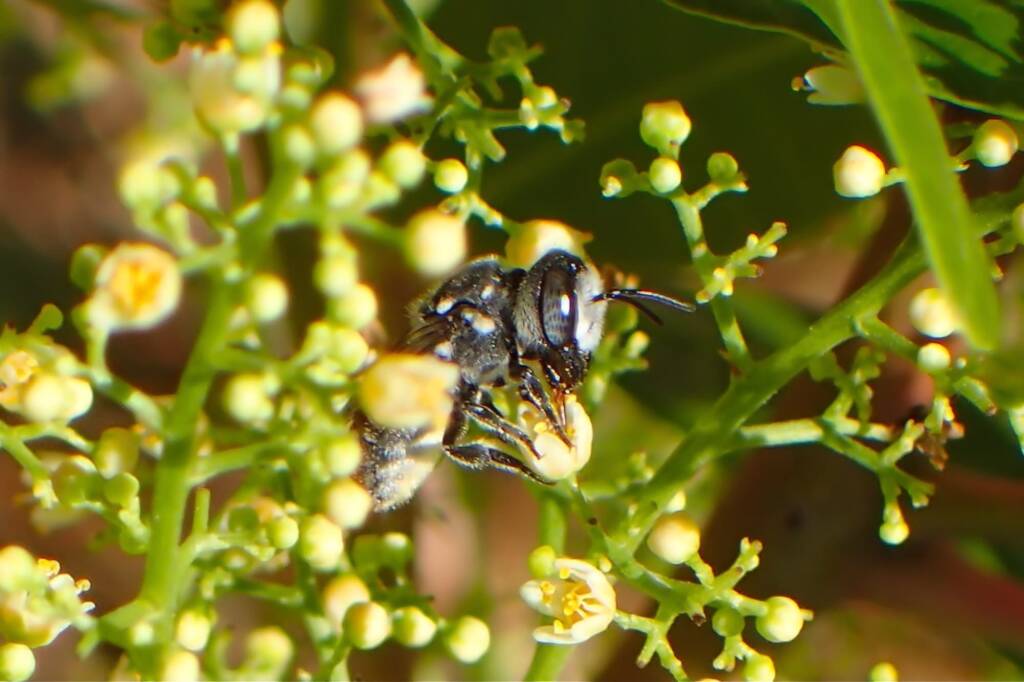
When you look at the ‘true’ colour and pattern in bees eyes, the ones you can see it in like Amegilla, Thyreus, some of the Megachile and others, you can see that there is a clear difference in colour as well number, size, shape, shade and pattern of ‘spots’.
Author Gary Taylor, Western Australia
From what I’ve seen, it seems fairly different for all natives down to at least genus level and was wondering two things, is there often a noticeable difference down at species level, and do females and males of the same species have the same coloured/patterned eyes?
I wonder because of the little male Prosopisteron that used to hang around fanning his pheromones near the girl. He’s got a full yellow face, hers is red, doesn’t really mean anything but he’s also slightly larger than her which is a little unusual… Possibly a totally different species, apart from him being there around the time she was, I have nothing to tie them together other than the strikingly similar eye colour and pattern.
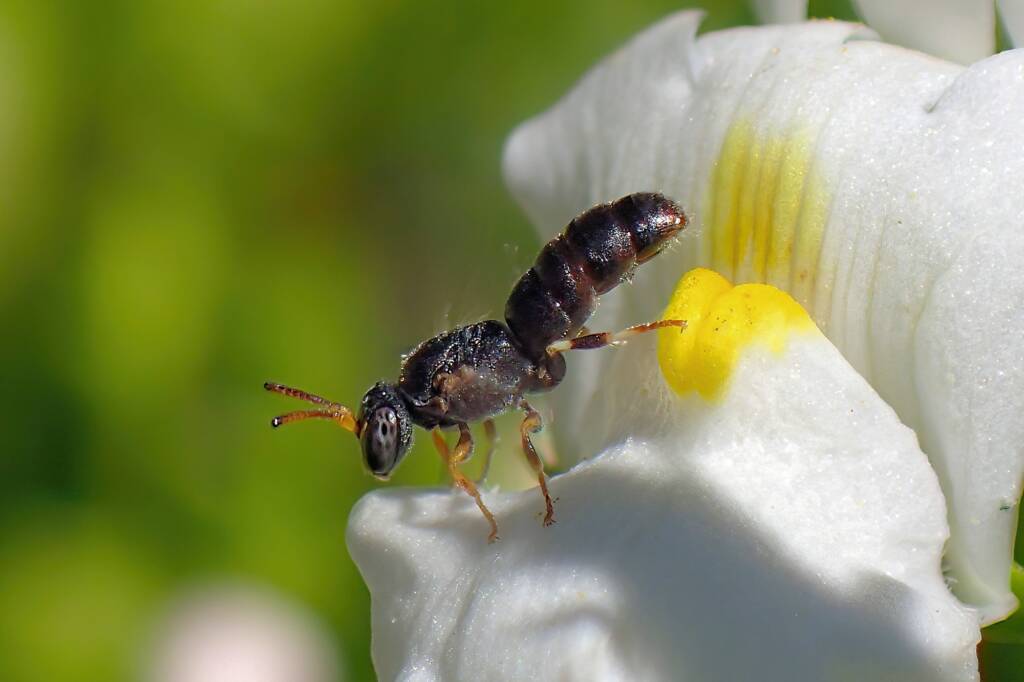

Compound Eyes
The compound eyes of the bee are composed of thousands of little facets (lenses). It is these facets that enable the bees to see/detect colour, movement, and patterns. It is understood that the images detected from all of the lenses in a single compound eye are generated into a single image in the brain of the bee. Whilst bees do not see images the way humans see them, it is suggested that what they see is more like a mosaic of images, the image being less about definition and outlines.
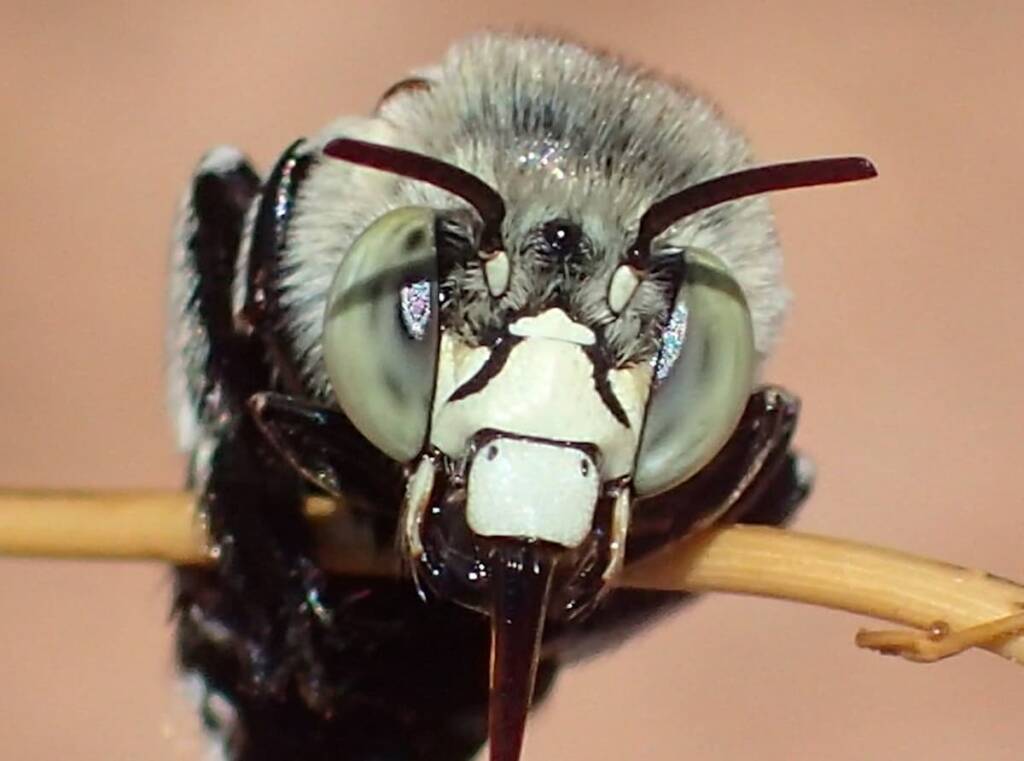
Throw into this mix that bees see more of the ultraviolet (UV) spectrum then us humans. This spectrum is something that many flowers contain, creating a colour image pattern that can only be seen by organisms that possess the ability to see this part of the UV spectrum. Whilst bees can also detect polarized light, they cannot see as far into the red spectrum as humans, with red appearing as black to a bee.
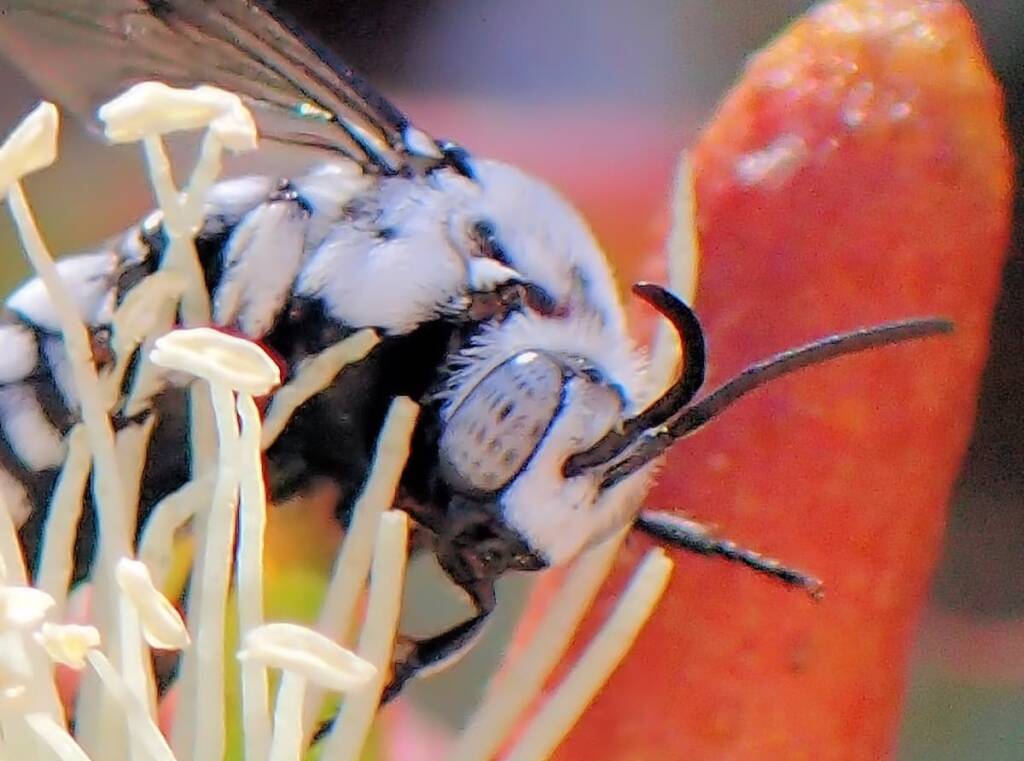
The Ocelli
Located on the top of the bee’s head, centered between the bee’s larger compound eyes are what are called the ocelli. There are three of them, positioned in a triangular layout. Ocelli comes from the Latin word ocellus and means “little eye”.
The function of the three ocelli (sometimes referred to as eyes or simple eye) at the top of a bee’s head is understood to detect light intensity (distinguish light from dark). Arranged in a triangular pattern, each ocelli contain only one lens. The ocelli, is thought to help bees navigate during flight and to detect movement (such as the shadow of a predator overhead).
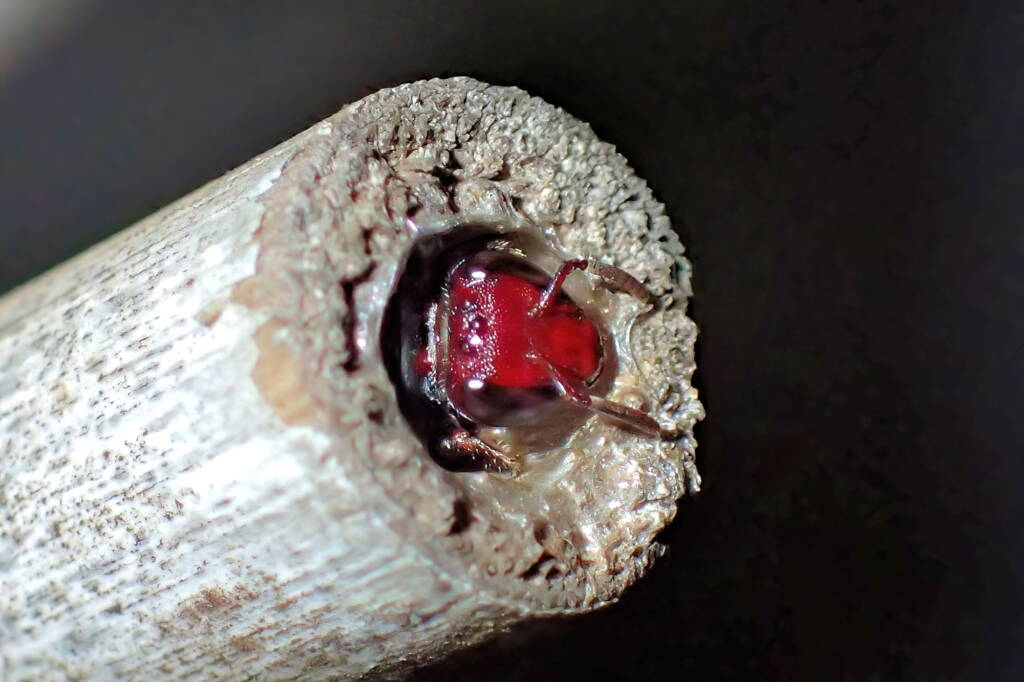
Whilst a number of experiments have been conducted to investigate the role of the ocelli within the visual system, their optical characteristics and function remain a controversial subject.

Eye Shape of Flies, Bees and Wasps
Some of the differences between the eyes of flies, bees and wasps are: flies have large round eyes that are placed more towards the front of the fly’s head. Most bees and wasps have a more narrow and long, oval shaped eyes that are on the sides of their heads. In addition, whilst some types of wasps have distinctive notches in the front edges of their eyes, bees do not have these notches in their eyes.

Hairy Eyes
Another lesser known fact about the eyes of a select group of bees are those that have hairy eyes. Whilst most species of bees do not have hairy eyes, there are some species that do have hairy eyes, specifically honey bees and the sharp-tail bees belonging to the Megachilidae bee family. More information can be found in the link in our footnote/references.2
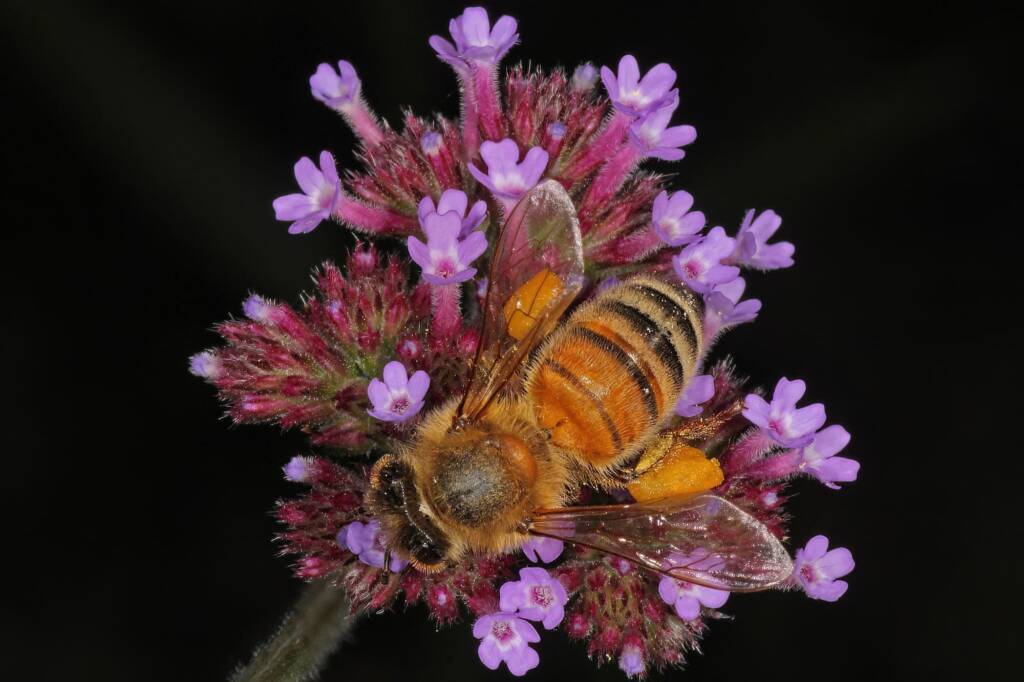
Footnote & References
- Selection of bees, photographs © Gary Taylor, Western Australia
- Honey Bees Have Hairy Eyes, BuzzAboutBees.net – The Wonderful World Of Bees, https://www.buzzaboutbees.net/honey-bees-have-hairy-eyes.html

Bees AnatomyBees Antenna It’s in the eyes Pre-pygidial fimbria Wings of the bee
Bee BehaviourBubbling Bees Buzz Pollination Operculum lifting behaviour
BeesBees Anatomy Bee Behaviour Blogging Bees… Bees – image index Amegilla Bee Apis mellifera Austroplebeia australis Austrothurgus Braunsapis sp Ceylalictus perditellus Colletidae Euryglossinae Exoneura Homalictus Hyleoides bivulnerata Lasioglossum Lasioglossum (Chilalictus) Lipotriches Megachile Meroglossa Stenotritidae Tetragonula Thyreus Xylocopa
